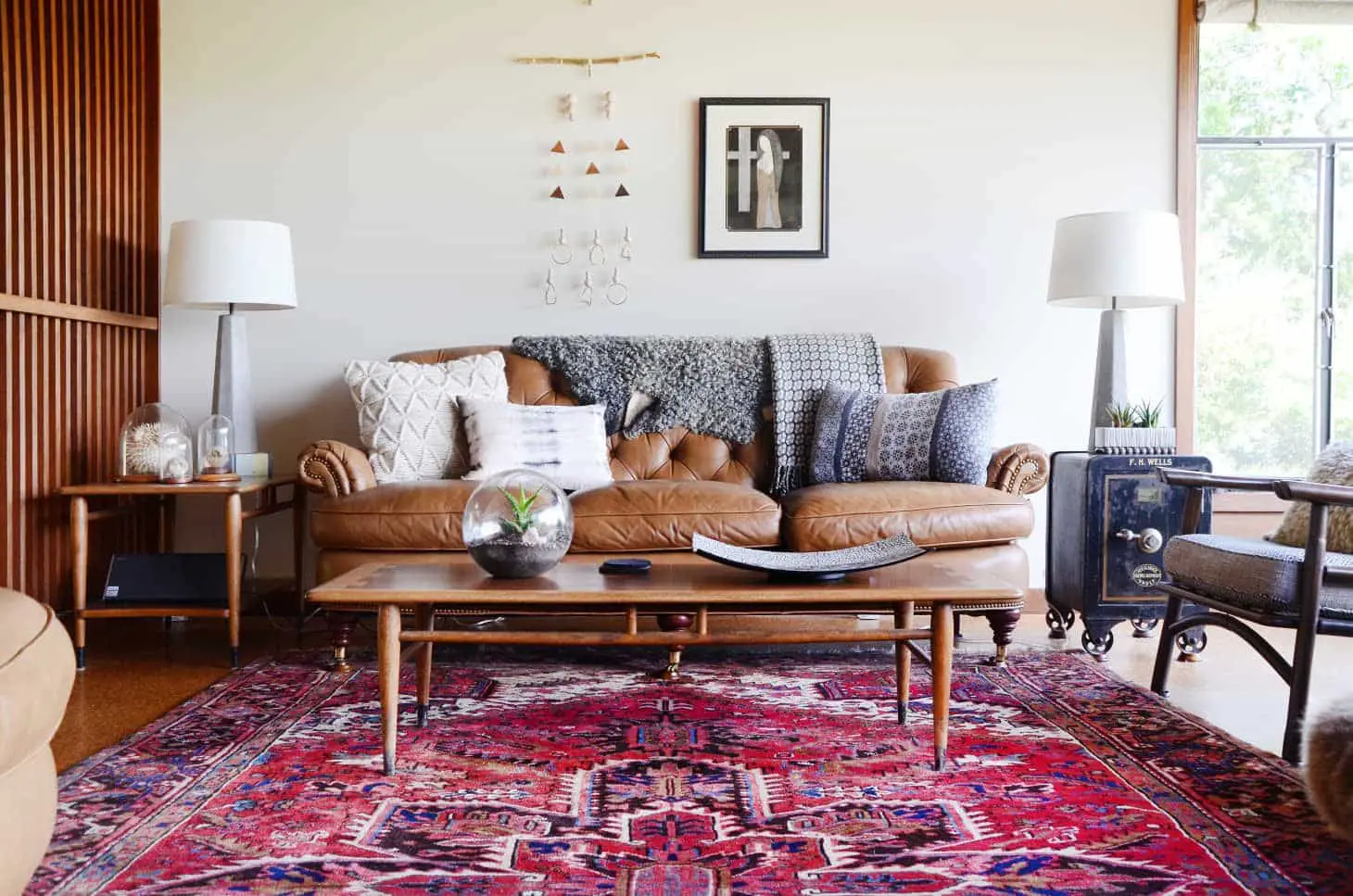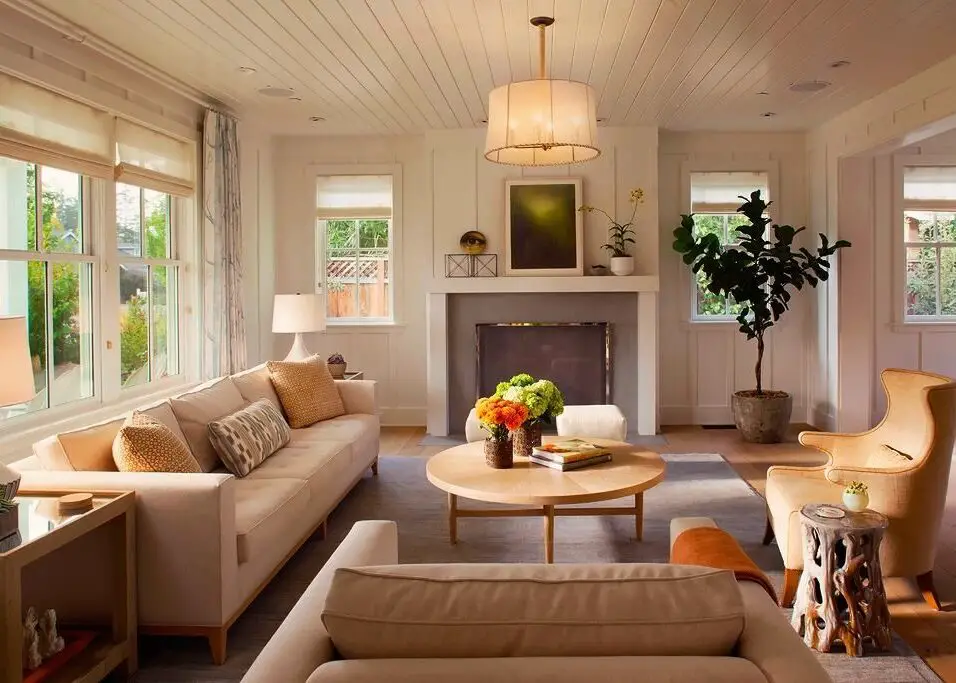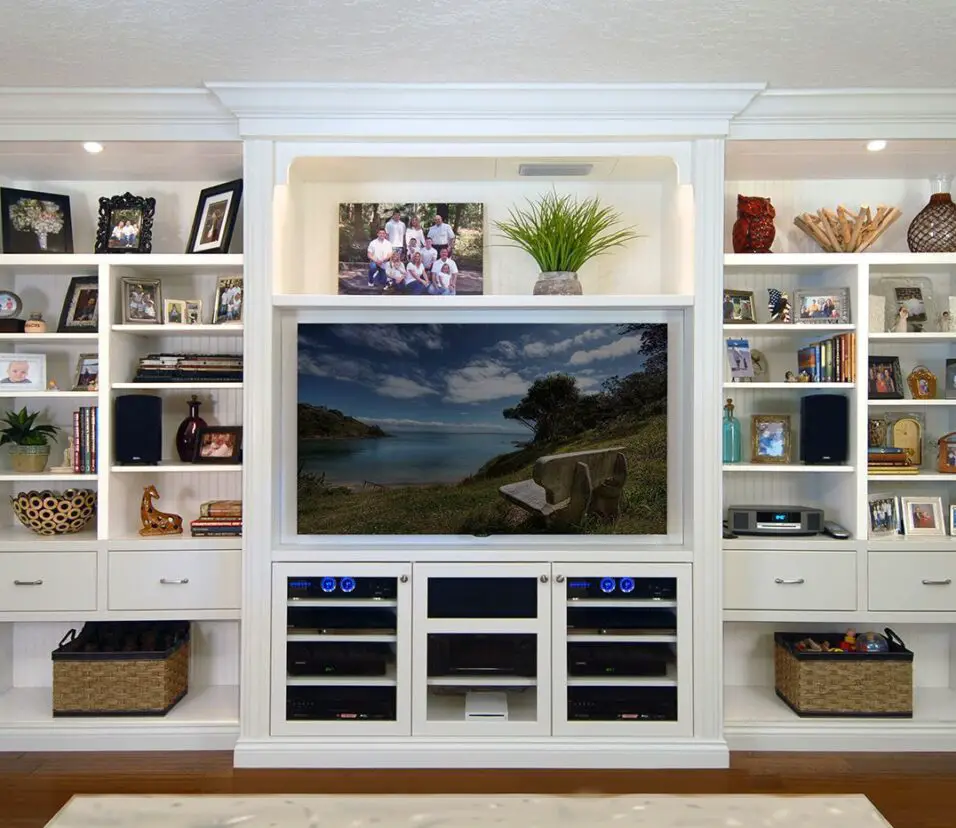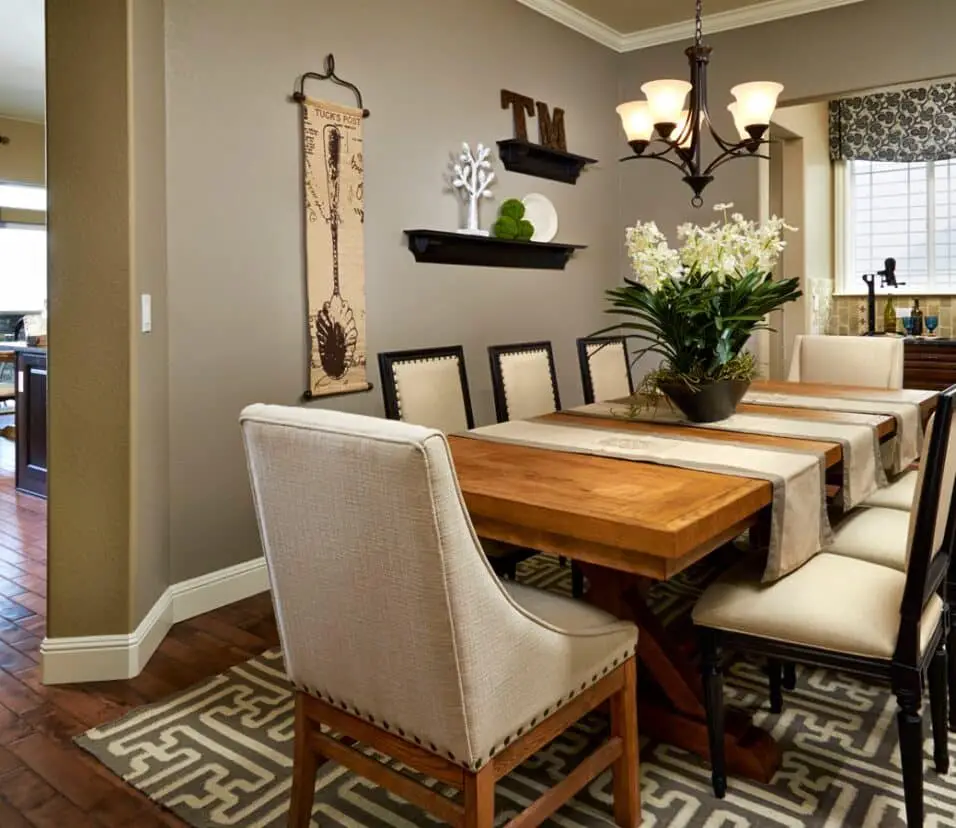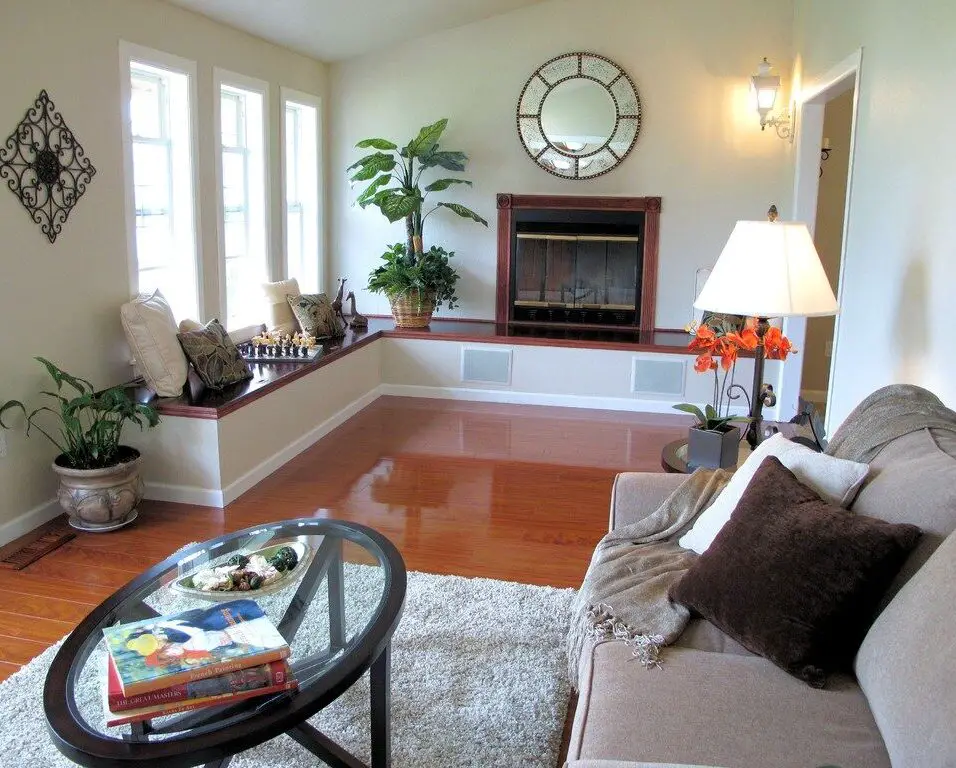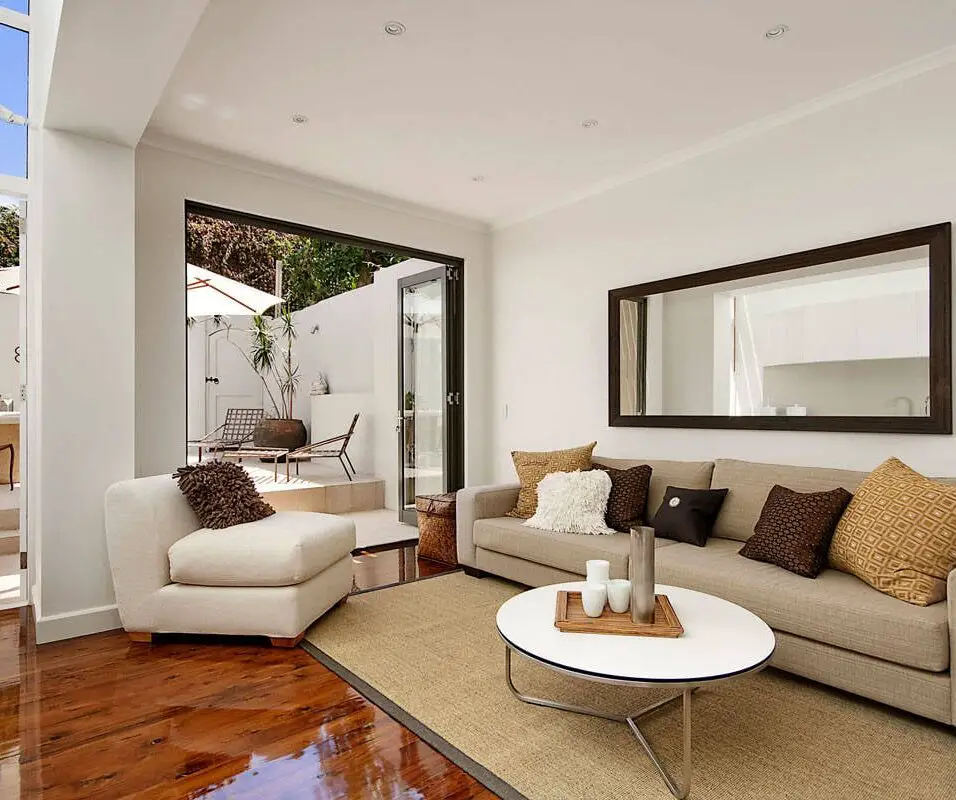How To Pick A Rug Color For Living Room
Introduction
How To Pick A Rug Color For Living Room: One such essential element that often goes unnoticed but plays a crucial role in tying the entire space together is the rug. Selecting the perfect rug color for your living room can elevate the overall aesthetic and create a harmonious and inviting environment for you and your guests. Consider the natural light in your living room. Rooms with ample sunlight can handle darker-colored rugs without feeling too enclosed, while spaces with limited light may benefit from lighter-colored rugs that help brighten the area and create an airy feel.
Texture and pattern are equally vital aspects when choosing a rug color. A solid-colored rug can create a sense of calm and elegance, while patterned rugs add interest and can tie together various design elements in the room. If your living room has patterned furniture or busy decor, a solid-colored rug can provide visual relief, while a patterned rug can add depth to a more minimalist setting.
When it comes to choosing the right rug color, it’s essential to consider various factors, such as the room’s existing best color scheme, the furniture and decor, the amount of natural light the room receives, and the overall style you wish to achieve. Whether you desire a cozy, warm atmosphere or a more vibrant, eclectic look, the rug color can be the key to achieving your interior design vision.
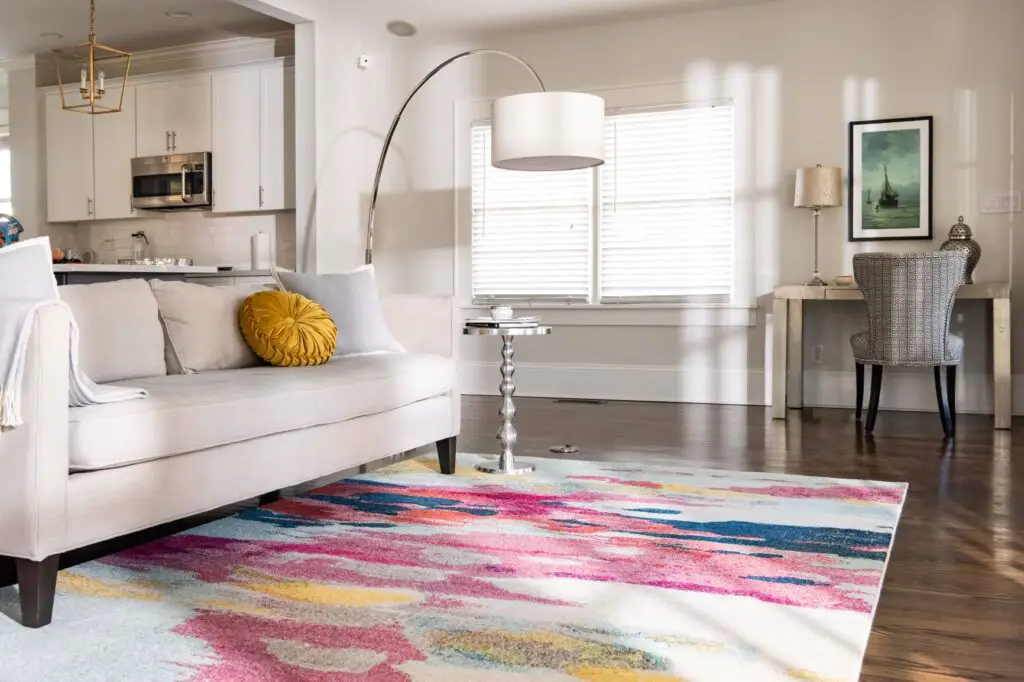
What color should your rug be in living room?
Think About the Size of the Room
The size of your living room can also impact your choice of rug color. If your living room is small, consider choosing a lighter-colored rug that can make the space appear larger. For larger living rooms, darker-colored rugs can create a cozy and intimate atmosphere.
The first step in selecting the ideal rug color is to assess the existing color scheme of your living room. If you have neutral walls and furniture, you have the freedom to introduce bold, vibrant rug colors to create a striking focal point.
A richly colored rug can inject energy and character into an otherwise understated space. On the other hand, if your living room already features an array of colors, opting for a more subtle or complementary rug can help balance the visual elements and prevent the room from feeling too busy or overwhelming.
Rug colors can either complement or contrast with the overall color palette of the living room. A complementary color scheme involves choosing a rug color that lies opposite to the dominant hues in the room.
For example, if your walls are painted in warm shades like beige or cream, a rug with cool colors like blues or greens can create a visually pleasing contrast. Alternatively, opting for a rug with colors that blend harmoniously with the room’s existing palette can contribute to a sense of unity and coherence.
How do I choose a rug color scheme?
Pick a rug colour that complements your existing furniture and design. Your area rug should match everything! Using existing features such as furniture in your room is a great way to pin down colour choices. Choosing a shade that matches with other elements of the room can make your interior decoration look cohesive.
Before diving into rug color options, take a good look at your existing decor. Consider the colors of your walls, furniture, curtains, and other decorative elements in the room. If you have a dominant color scheme, opt for a rug that complements these colors rather than clashes with them. For instance, if your decor features warm tones like browns and oranges, consider a rug with similar warm colors or choose a complementary color that harmonizes with the existing palette.
Think about the mood and style you want to create in the room. Colors have the power to evoke emotions and set the ambiance. Warm colors like reds, oranges, and yellows create a cozy and inviting atmosphere, perfect for living rooms and bedrooms. Cool colors such as blues, greens, and purples promote a sense of calm and relaxation, ideal for spaces meant for unwinding, like bedrooms or reading nooks. Once you’ve determined the desired mood and style, select a rug color scheme that aligns with those intentions.
What color rug goes with my couch?
The rug under couch can be lighter or darker depending on your personal and design preferences. Dark sofas are usually chosen for light rugs and light sofas for dark rugs. If you have a light sofa, a dark rug can provide amazing contrast and vice versa.
Begin by examining the color of your couch. Is it a neutral tone like beige, gray, or white? Or does it have a bold color like blue, green, or red? Identifying the primary color of your couch will help you determine whether you need a complementary or matching rug color.
For couches with neutral tones, consider choosing a rug color that complements the couch color. Complementary colors are those that lie opposite each other on the color wheel. For example, if your couch is a warm beige, a cool-toned rug in shades of blue or green can create a visually pleasing contrast. On the other hand, if your couch is a cool gray, a warm-toned rug in shades of orange or red can add warmth and balance to the space.
What colour rug makes a room look bigger?
Light-colored rugs
Light-colored rugs make a room look brighter and feel spacious. Consider pale pastels, natural-looking neutrals, and off-white to start.
Light-colored rugs, such as whites, creams, pastels, and light grays, are excellent choices for making a room appear larger. Light colors reflect more natural light, which gives the impression of an open and airy space. When light bounces off the rug, it creates a bright and expansive feel, making the room visually appear larger than it actually is.
Neutral colors like beige, taupe, and light browns also work well to enlarge a room. These colors are versatile and can easily blend with various decor styles, allowing the room to feel cohesive and harmonious. Neutral tones create a sense of tranquility, making the space feel more open and inviting.
A monochromatic color scheme, where the rug color closely matches the color of the floor or walls, can help create a seamless flow and visually expand the room. This continuity reduces visual interruptions and creates a sense of unity, giving the illusion of more space.
While solid-colored rugs are great for making a room look bigger, subtle patterns can also be used to achieve the same effect. Low-contrast and tone-on-tone patterns add visual interest without overwhelming the space, providing a sense of depth and dimension.
When trying to make a room appear larger, it’s best to avoid dark-colored rugs and busy patterns. Dark colors absorb light and can make the room feel more enclosed. Additionally, busy patterns can create visual clutter and make the space feel smaller. If you prefer patterns, opt for more subtle designs that do not dominate the room.
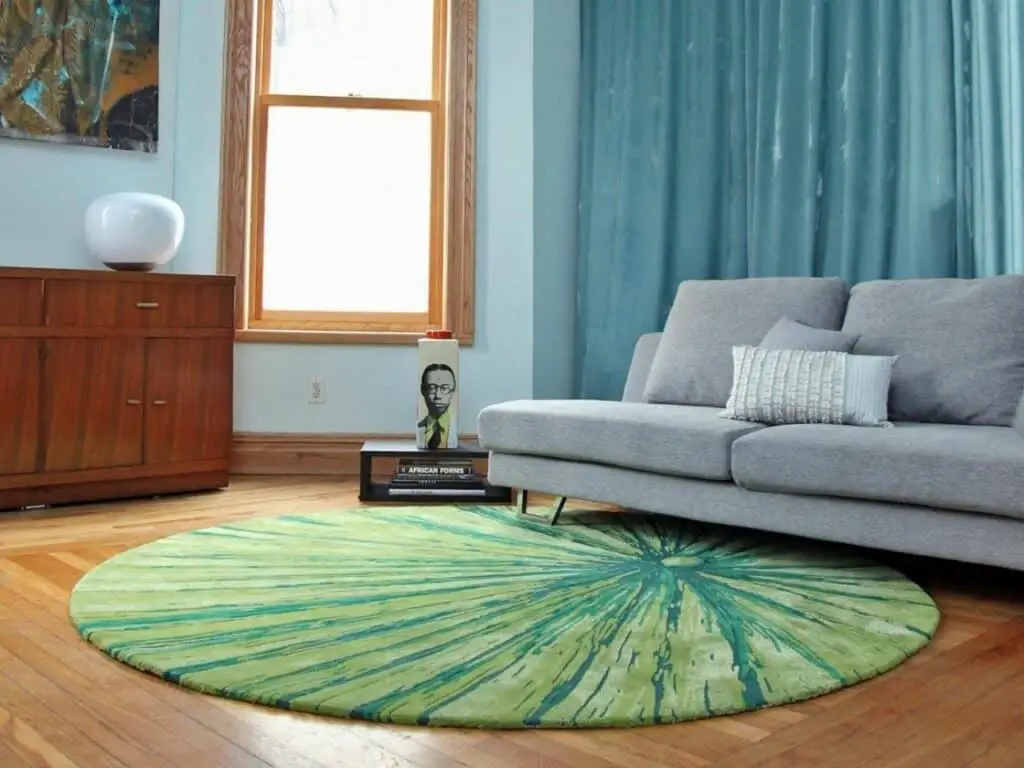
Should the rug be darker or lighter than walls?
There’s no rule, but the best schemes have flooring-wall contrast. Lighter carpets go well with dark walls, and darker carpets go well with lighter walls.
Choose a rug color darker than the walls to create a stunning contrast. This contrast can make the rug a focal point by adding depth and aesthetic appeal. If your walls are pale or neutral, a darker carpeting might provide drama. Larger spaces with lots of natural light benefit from a dark rug that adds richness without dominating.
A darker rug may make a space feel warm. It makes a room cozy, especially in bedrooms, living rooms, and dining rooms where comfort and relaxation are needed. When the rug is darker than the walls, it grounds the room, making it cozy.
Choosing a rug color lighter than the walls can generate a sense of space and airiness. Light-colored rugs reflect natural light, making a room appear larger and more open. In small rooms or those with little natural light, a light-colored carpeting can brighten and enlarge the space.
How do you match a room to a rug?
First, take a quick inventory of your color scheme. To tie the look of the room together, you’ll want to select a rug that complements the two or three main colors in the room. If you go to a store, we suggest you take a throw pillow and a color swatch of your drapes, furniture or wall colors with you.
Begin by assessing the existing decor in the room. Take note of the colors of the walls, furniture, curtains, and other decorative elements. Understanding the room’s color scheme and style will help guide your choice of rug color, pattern, and texture.
Consider the intended purpose of the rug in the room. Is it meant to be a focal point, or do you prefer it to be a subtle accent that complements the decor? Knowing the rug’s role in the room will help you decide on its size, pattern, and color.
Selecting the appropriate size rug is crucial for achieving a harmonious look. The rug should be large enough to anchor the furniture and create a cohesive seating area. In a living room, the front legs of the furniture should ideally rest on the rug, while in a dining room, the rug should be large enough to accommodate the dining table and chairs comfortably.
Take the room’s style into account when choosing a rug. For a contemporary or modern room, consider rugs with bold patterns or abstract designs. Traditional rooms might benefit from rugs with intricate patterns or classic motifs. If your room has a minimalist or Scandinavian style, opt for a simple, solid-colored rug that complements the clean lines and simplicity of the decor.
Choose a rug that complements the room’s color scheme and coordinates with the patterns present. If the room has bold and vibrant colors, opt for a rug with subtle tones that won’t overwhelm the space. Alternatively, if the room is relatively neutral, a rug with bolder colors or patterns can add visual interest and become a focal point.
Are dark or light rugs better?
Lighter carpet colors tend to make a room feel larger, while dark colors make the room feel smaller yet cozy. Best appearance: Lighter-colored carpets make a room feel more spacious and bright, but if you want a cozy or moody vibe, dark carpet is the way to go.
Creates an Airy Feel: Light-colored rugs have the power to visually expand a room and create a sense of openness. They reflect more light, making the space feel brighter and more spacious.
Enhances Minimalist and Modern Spaces: Light rugs are popular choices for minimalist and modern design schemes, as they provide a clean and sophisticated look.
Easy to Match with Decor: Light-colored rugs are generally easier to match with the existing decor, as they can blend seamlessly with a variety of colors and patterns.
Ideal for Small Rooms: In smaller rooms, light rugs can make the space feel larger and less cramped, making them a suitable choice for compact living areas.
Both dark and light rugs require maintenance, but they have different challenges. Dark rugs may show less dirt, but they might show lint, pet hair, and light-colored debris. Light rugs may require more frequent cleaning to maintain their bright appearance.
Consider the amount of natural light the room receives. If the room has ample natural light, a light-colored rug can help brighten the space. In rooms with limited natural light, a dark-colored rug can create a cozy ambiance.
Consider the overall color scheme of the room and the mood you want to create. Dark rugs can add richness and drama, while light rugs can create a serene and airy feel.
What color rug shows the least dirt?
Light colors like beige, tan, and white are good choices since they won’t show any dirt or stains as easily as darker colors do. Patterned carpets with designs such as stripes or swirls can also help mask any messes while adding visual interest to your space.
Rugs in medium to dark tones, such as deep browns, charcoal grays, and navy blues, are excellent choices for concealing dirt and stains. These darker colors are less likely to show small spills or tracked-in dirt, making them ideal for high-traffic areas or homes with pets and children.
Rugs with mottled or speckled patterns can be great options for hiding dirt. These patterns incorporate various colors and textures, which can effectively disguise dirt and stains, making them less noticeable on the rug’s surface.
Rugs with multi-color patterns that feature a combination of light and dark hues can help conceal dirt and stains effectively. The mix of colors and patterns can create visual distractions, making it harder for dirt to stand out.
Textured rugs, such as those with a high pile or woven patterns, can be forgiving when it comes to showing dirt. The texture of the rug’s surface can help hide dirt particles, keeping them from being easily visible.
Variegated or ombre rugs blend different shades of color from light to dark or vice versa. These gradient effects can help camouflage dirt and stains, especially if the color variations are subtle.
Rugs made from natural fibers like jute, sisal, or seagrass are naturally textured and often have a speckled appearance. These rugs tend to be more forgiving when it comes to showing dirt and stains, making them suitable for high-traffic areas.
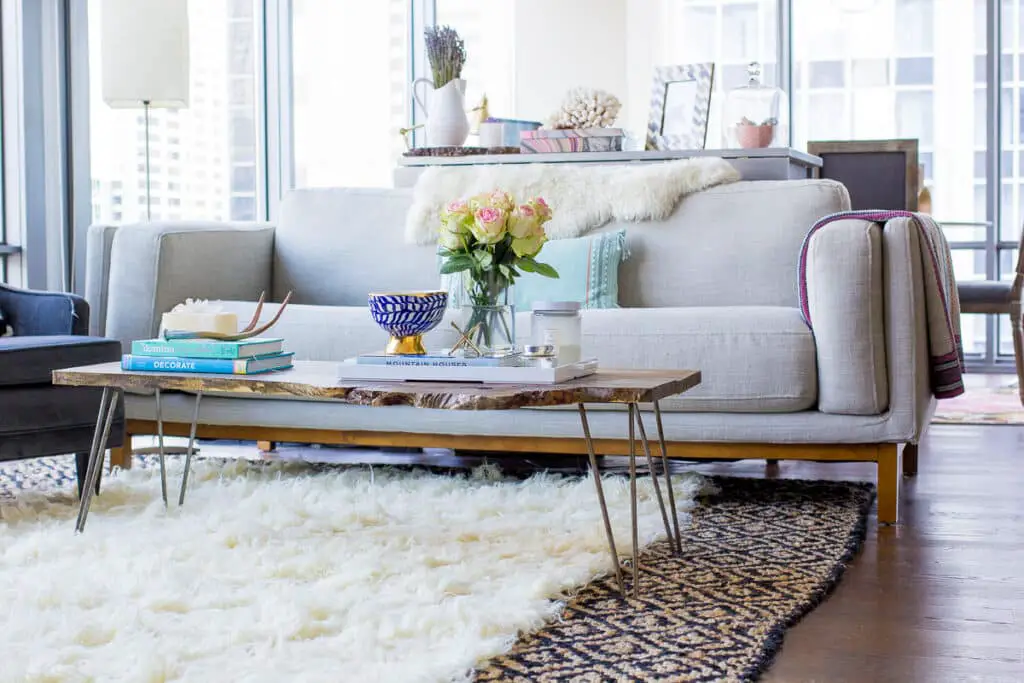
Conclusion
The ideal rug color for your living room is a rewarding journey that requires a thoughtful approach and an understanding of design principles. The rug’s color plays a significant role in shaping the overall ambiance of the space, making it a crucial element in interior decorating. By considering various factors such as the existing color scheme, natural light, texture, and patterns, you can make a well-informed decision that enhances the room’s aesthetic and functionality.
Remember that there are no strict rules when it comes to choosing a rug color. It’s an opportunity to express your personality and style while creating a harmonious and inviting living room. Don’t be afraid to experiment with different colors and patterns, and consider using samples to see how they interact with your space before making a final decision. A well-chosen rug color can transform your living room, becoming the centerpiece that ties together all the design elements, furniture, and decor.
It can set the tone for the entire room, whether you seek a cozy, relaxed atmosphere or a vibrant, energetic environment. Lastly, trust your instincts and enjoy the process of finding the perfect rug color. With a careful balance of personal preference and design principles, you’ll create a living room that reflects your unique style, complements your lifestyle, and welcomes both you and your guests with open arms.



